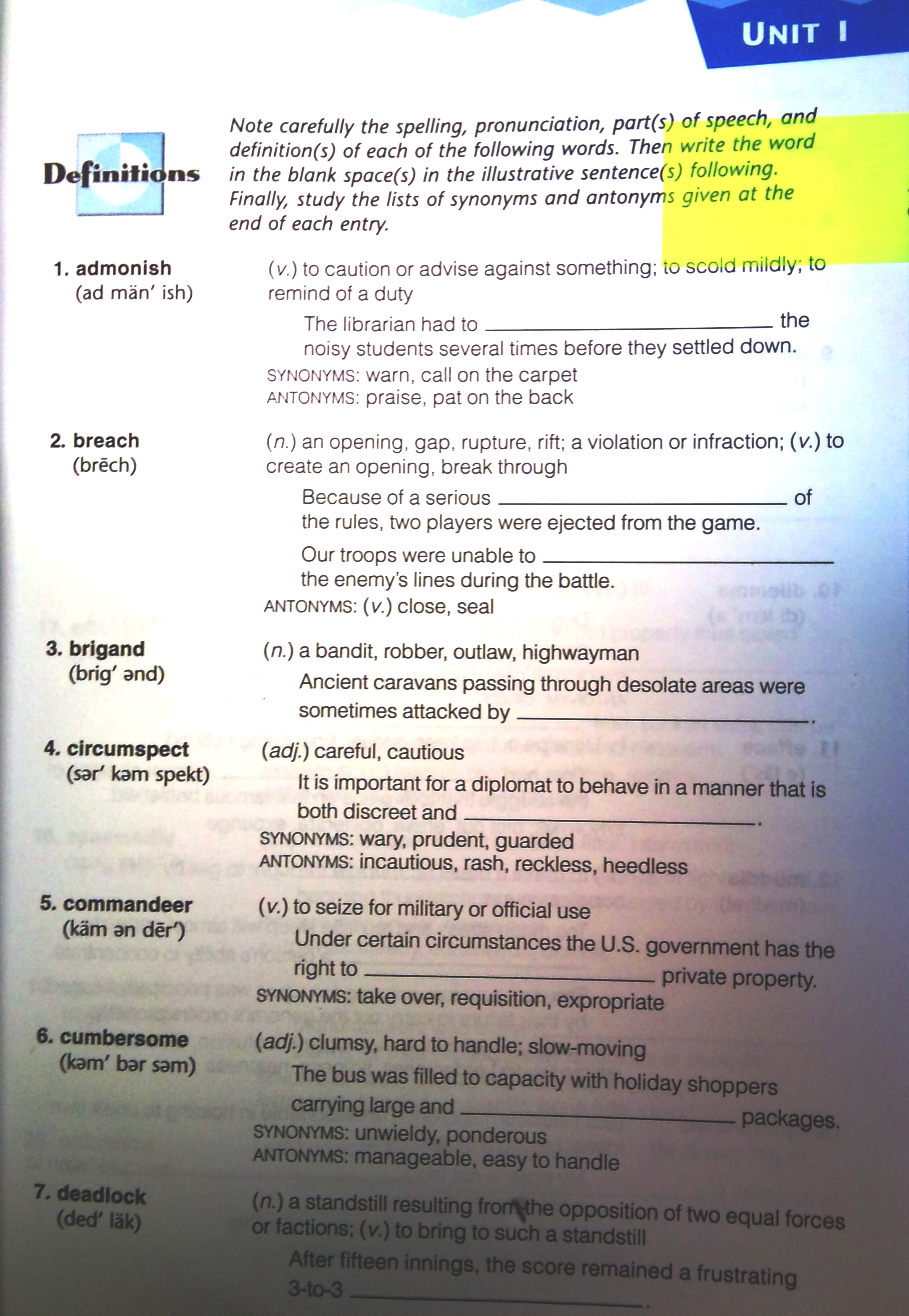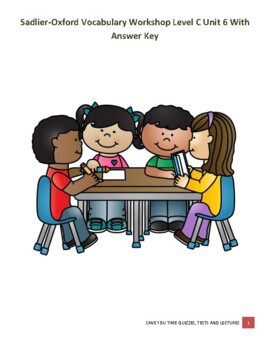

pl.) applause enthusiastic praise or approval preclude (v.) to make impossible, prevent, shut out revert (v.) to return, go back rubble (n.) broken stone or bricks ruins servile (adj.) of or relating to a slave behaving like or suitable for a slave or a servant, menial lacking spirit or independence, abjectly submissive vigil (n.) a watch, especially at night any period of watchful attention wrangle (v.) to quarrel or argue in a noisy, angry way to obtain by argument to herd (n.) a noisy quarrel antics (n.
Vocab workshop level c unit 12 license#
If you’re interested in sharing with your team or co-op, please buy license to share at a discount of half off the original product price.Hover (v.) to float or hang suspended over to move back and forth uncertainly over or around jostle (v.) to make or force one's way by pushing or elbowing to bump, shove, brush against to compete for laggard (n.) a person who moves slowly or falls behind (adj.) falling behind, slow to move, act, or respond plaudits (n.
Vocab workshop level c unit 12 how to#
How to get TPT credit to use on future purchases: Visit me on Instagram to see my life as a teacher at Education Turnpike. Please click on the green star to follow me to receive updates and new product alerts. Click here to find further unit tests and test bundles.


All other Sadlier vocabulary workshop tests can be found there in a designated category called Vocabulary.

If you like this resource, please visit my TPT store at Education Turnpike to find other Sadlier vocabulary tests and related resources. Sadlier Level C Unit 12 test with answer key.This test has an answer key for grading purpose. There is no additional preparation needed by you to prepare this assessment. Simply print the test and make the correct number of copies based on how many students you have in class. Looking for a way to assess your students on Sadlier level C unit 12 vocabulary terms? This resource includes a unit test for unit 12 through a one-page test that has 20 questions that will evaluate whether students know unit word definitions, synonyms, antonyms and can use context clues.


 0 kommentar(er)
0 kommentar(er)
